Have you ever heard of Mantua, Italy? If not, don’t worry. Despite being one of the most beautiful cities in northern Italy, Mantua is often overlooked, not only by foreign visitors but even by Italians. You’ll be surprised by the many things to do in Mantua, so get ready to discover why you should add it to your Italy bucket list.
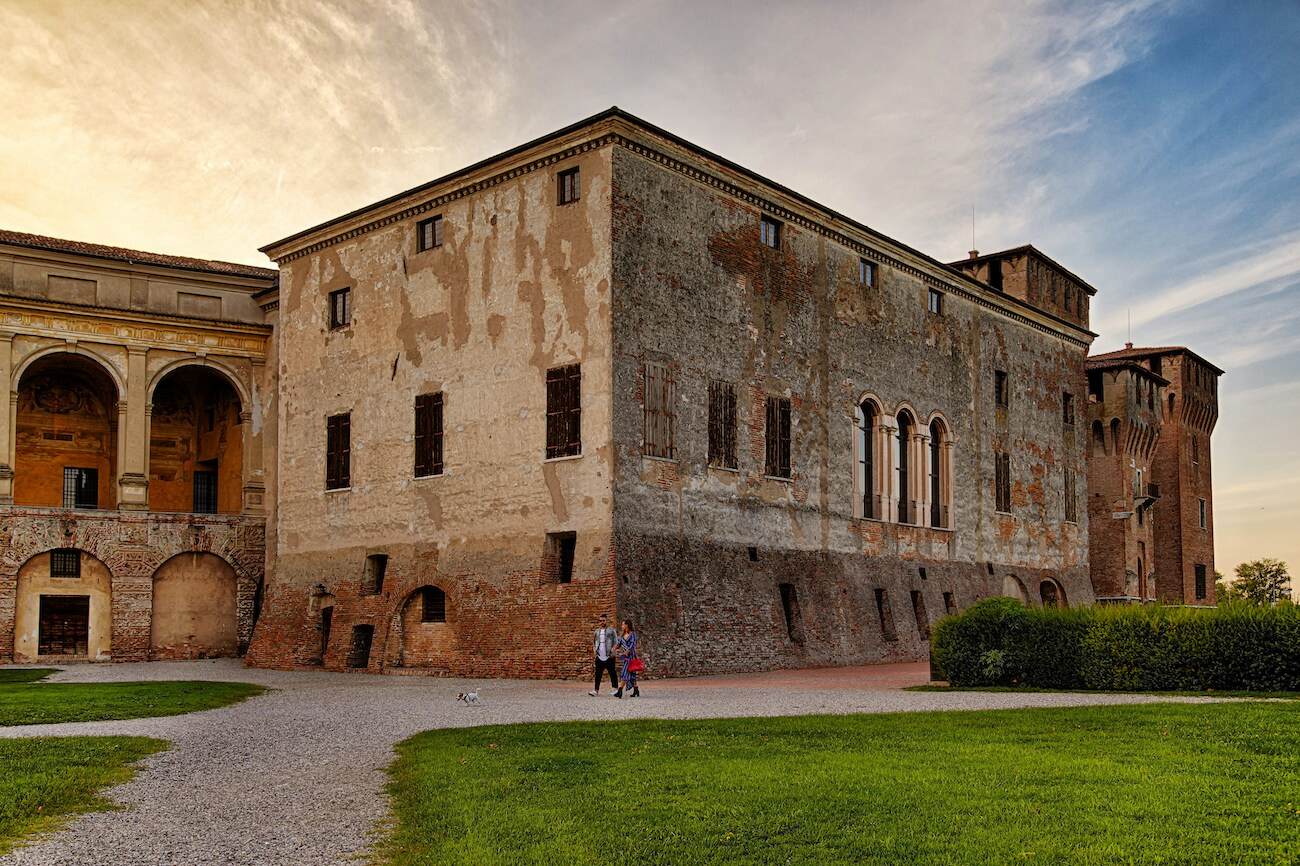
You may never heard of Mantua, but if you’re willing to discover Italy off-the-beaten-track read further and find out all this stunning city offers.
Mantua: How to Plan Your Trip

How to get to Mantua: you can comfortably reach Mantua by train from Verona (45 min). The journey is longer from Venice (2h 30min with the fastest solution) and Milan (approx. 2h 30min, by train+bus), so it’s a bit tight for a day trip. Check out the train timetables, and prices, and book your trip. Alternatively, you can rent a car, allowing you more freedom. Find the best car rental rates.
Where to stay in Mantua: unless you’re traveling by car, I suggest you stay in the historic center to savor it during the daylight and at night.
- The charming B&B Casa del Teatro features rooms tastefully decorated and a warm atmosphere.
- San Lorenzo Luxury is a boutique bed & breakfast recently refurbished. Rooms feature a contemporary style, and you’ll be only a few steps from Piazze delle Erbe.
- The beautiful Residenza Giulio Romano is set in a historic building. It combines contemporary decor with ancient wooden ceilings and fragments of frescoes. It’s a bit farther from the center, but the property is rather unique.
Mantua history in a nutshell

Mantua has a rich historical background that spans centuries, part of which is still visible in the city’s main landmarks. Here are some key points in the city’s history:
- Ancient Origins: Mantua’s history dates back to ancient times, with evidence of human settlement in the area as early as the Etruscan civilization. It later became a Roman colony in the 2nd century BC.
- Medieval Period: After the fall of the Roman Empire and during the Middle Ages, various dominators conquered Mantua, including Ostrogoths, Byzantines, Lombards, and Franks. In the 11th century, Mantua fell under the rule of Boniface of Canossa, Marquis of Tuscany, and one of the most powerful lords of his time. Boniface’s daughter, Matilda di Canossa, was the city’s last ruler, and after her death, Mantua became a free commune.
- Gonzaga Dynasty and Cultural Renaissance: The rise, fall, and magnificence of many Italian cities during the Renaissance are linked to the most influential families ruling specific areas of Italy. The Medici in Florence, the Este in Ferrara, the Visconti and Sforza in Milan. The same happened in Mantua under the House of Gonzaga, which became the ruling dynasty from the 14th century till the early 18th century. Mantua grew into one of the major art and culture hubs of the Renaissance. The city attracted famous artists like Leon Battista Alberti, Andrea Mantegna, and Giulio Romano. With many others, they shaped the city with breathtaking works of art.
- The Habsburgs: The Gonzaga family’s rule came to an end in 1707 when the Habsburgs of Austria seized Mantua.
- Napoleonic Era: In the late 18th century, Mantua fell under French control during Napoleon’s conquest of Italy. The Napoleonic rule was, however, short-lived, as in 1814, Mantua returned to Austria.
- Unification of Italy: Mantua, along with the rest of Lombardy, became a part of the Kingdom of Italy in 1866 following the unification of Italy.
Is Mantua worth visiting?

Yes, Mantua is one of the most beautiful hidden gems in Italy. As such, there’s no reason it should play a minor role in a tourist itinerary. The only downside is the relatively poor connection by public transportation, as you can only reach it by regional trains that are rather slow. But believe me, it won’t take you long to see why Mantua is worth visiting.
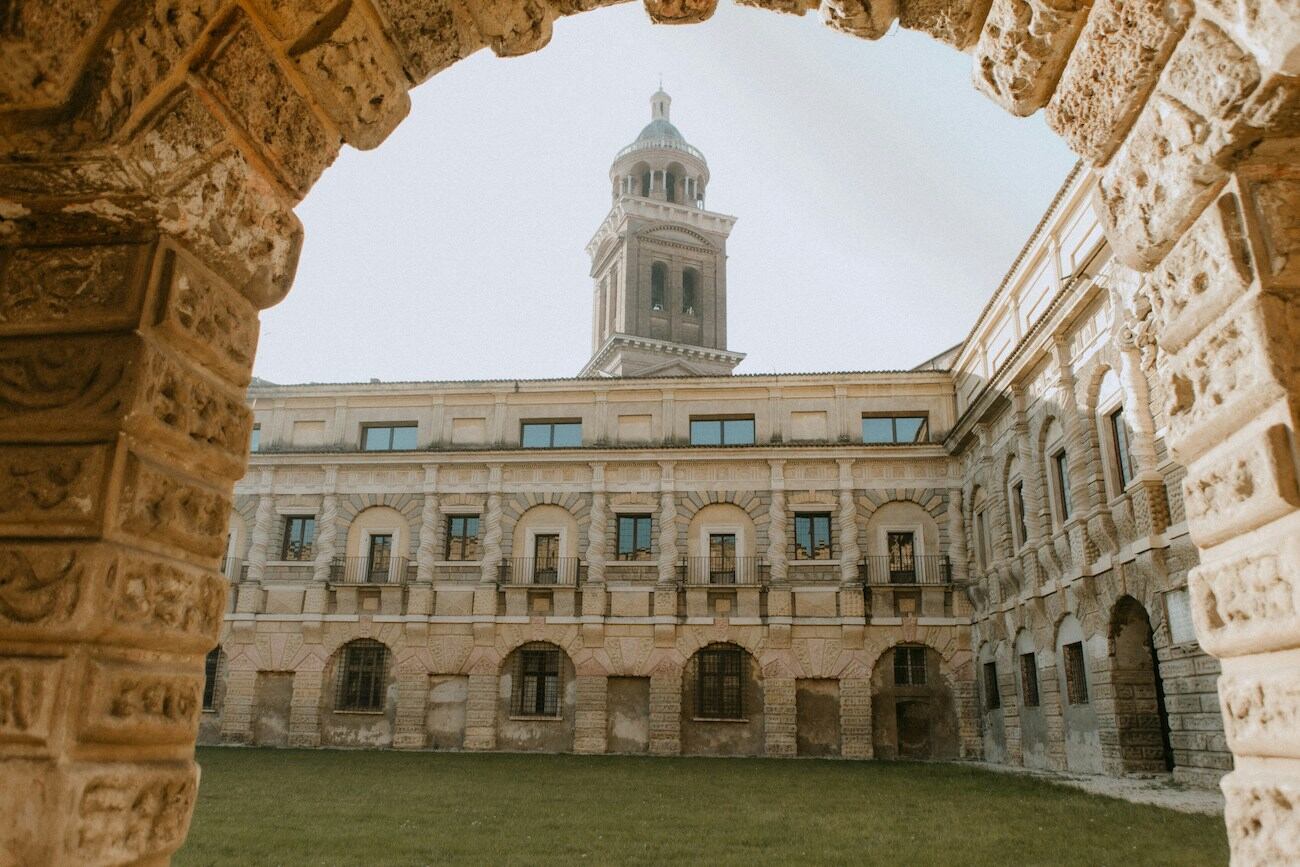
A remarkable example of Renaissance architecture and town planning, in 2007 Mantua became a UNESCO World Heritage Site together with Sabbioneta, the ideal city created in the second half of the 16th Century.
If you’re an art lover and are particularly fond of the Renaissance, you must add Mantua to your Italy bucket list. After Florence, Mantua is another treasure trove to admire unique Renaissance masterpieces.
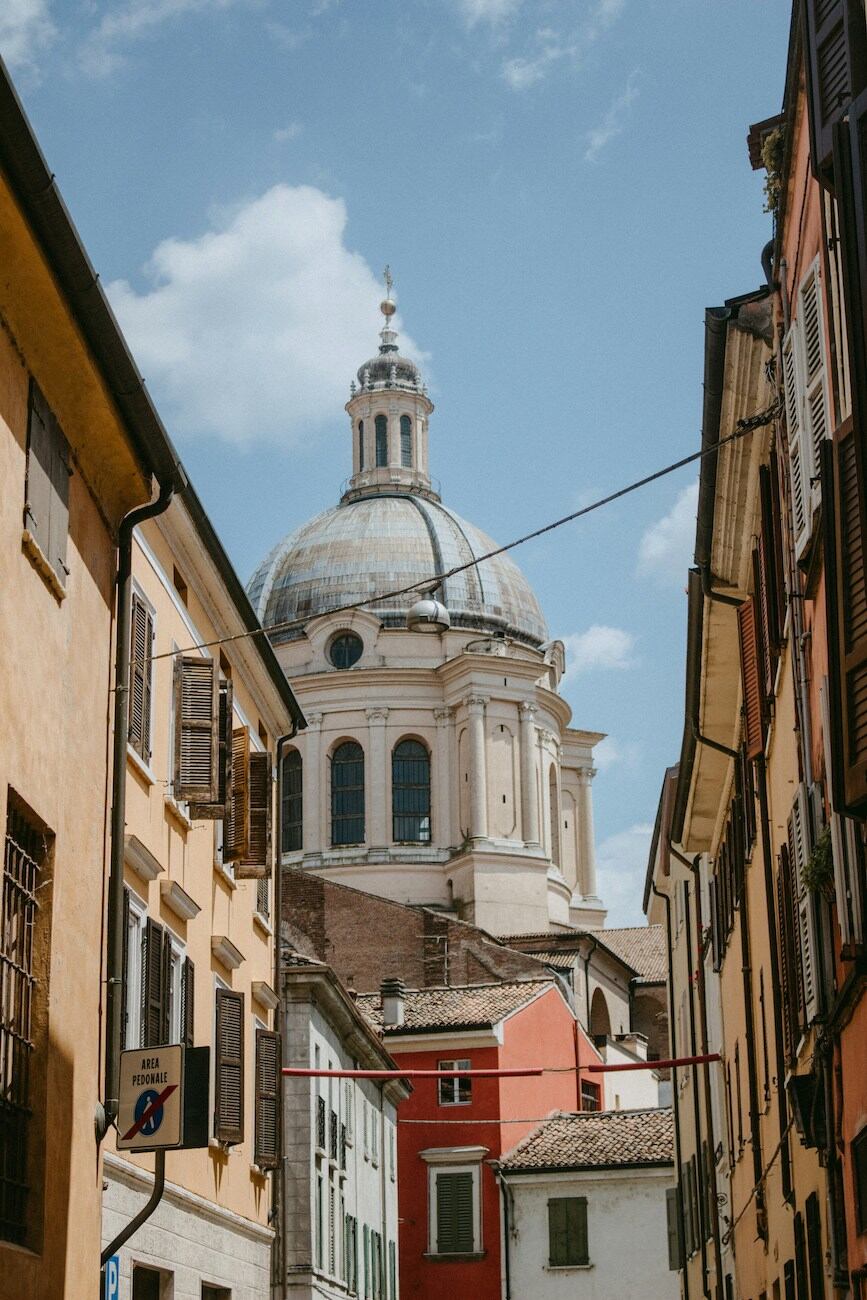
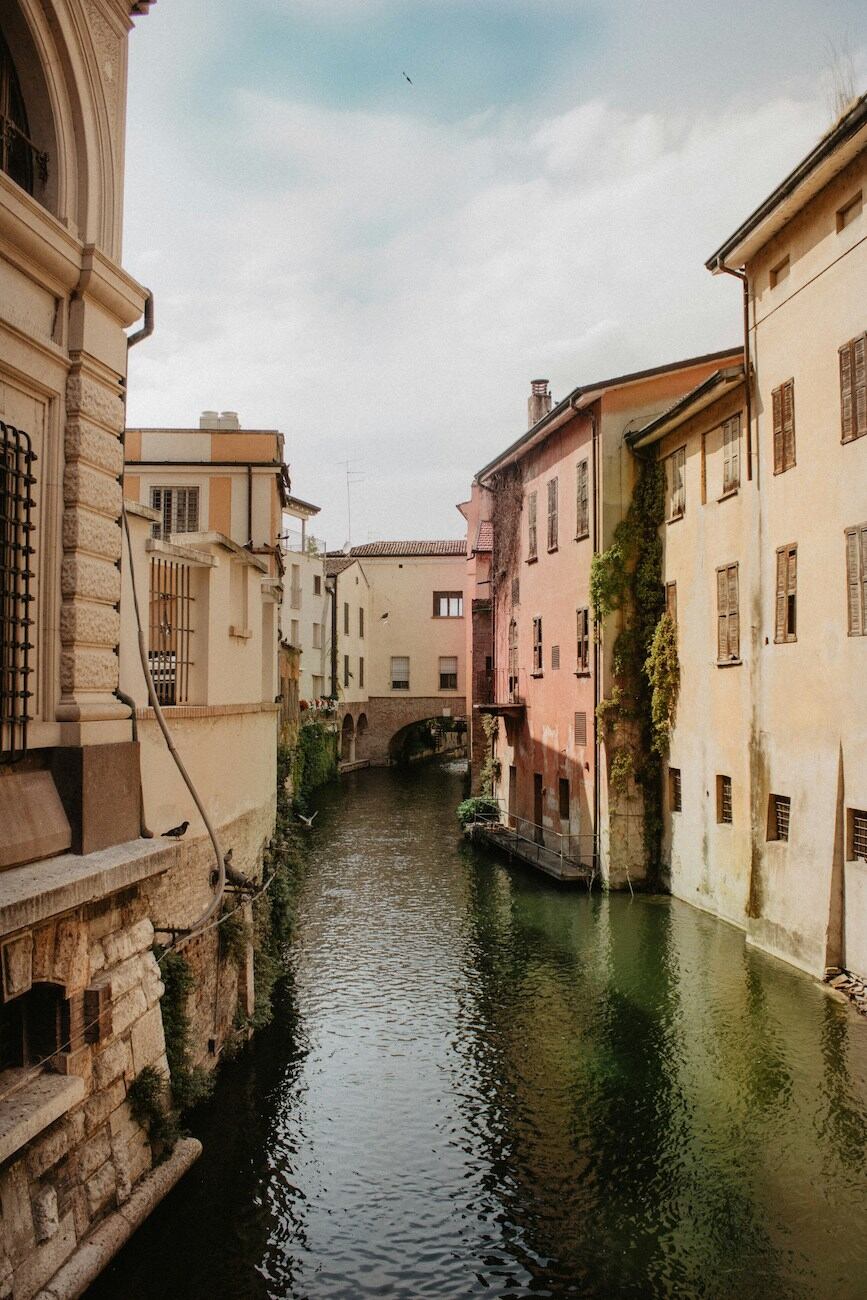
Mantua 2012 earthquake

Sadly, Mantua caught the attention and made the headlines in May 2012 when an earthquake in Emilia-Romagna, southern Lombardy, and Veneto badly damaged the city and the surrounding area. Luckily, the number of victims was limited. However, many people lost their houses and had their businesses disrupted. Also, the earthquake deeply marred some beautiful buildings from the Renaissance.
Slowly and patiently, the city started the rebuilding process.
In Italy, the restoration of ancient buildings and works of art must comply with strict regulations and criteria. It takes time, and it needs a lot of money. That’s why tourism is so important for areas affected by earthquakes and other natural disasters.
Best things to do in Mantua, Italy

Start discovering Mantua by exploring the beautiful historical center, housing most of the city’s landmarks.
Mantua Ducal Palace
The magnificent Ducal Palace (Palazzo Ducale) reflects the power and wealth of the Gonzaga family. With beautiful frescoes, precious tapestries, finely carved roofs, and exquisite stucco decorations, every room is a new surprise and endless proof of the miracle of the Italian Renaissance. Besides the artists’ genius, there were hundreds of highly skilled craftsmen who made possible the realization of such palaces.
Damaged by the earthquake, the famous “Camera degli Sposi”, the “Bridal Chamber”, has been lovingly restored. Painted by Andrea Mantegna between 1465 and 1474, it is one of the most important masterpieces of the Italian Renaissance. Undoubtedly, it’s a must-see for every art lover.
Mantua Palazzo Ducale is incredibly vast and rich. For that reason, I strongly recommend a guided visit to fully appreciate it.
BOOK YOUR GUIDED TOUR OF MANTUA PALAZZO DUCALEPiazza Sordello
After visiting Palazzo Ducale, spend some time admiring Piazza Sordello. This magnificent square is surrounded by some of the most beautiful historic buildings in the city. Don’t miss to pop in the magnificent Cathedral dedicated to St. Peter, where many members of the Gonzaga family rest.
Piazza delle Erbe and Rotonda di San Lorenzo
Walk under the arcades, once home to the historic shops of Mantua, until you reach Piazza delle Erbe. Once a commercial hub, it’s a magnificent medieval legacy. The piazza houses some of Mantua’s most remarkable buildings: the Merchant’s House, the Astronomical Clock Tower, and, next to it, the Palazzo della Ragione.
The Astronomical Clock was built by Bartolomeo Manfredi, a mathematician and astrologer at the service of the Gonzagas in the second half of the 15th century. I advise you to enter and climb the tower to admire the splendid astronomical clock (1473). Also, from atop you can enjoy sweeping views of Mantua.
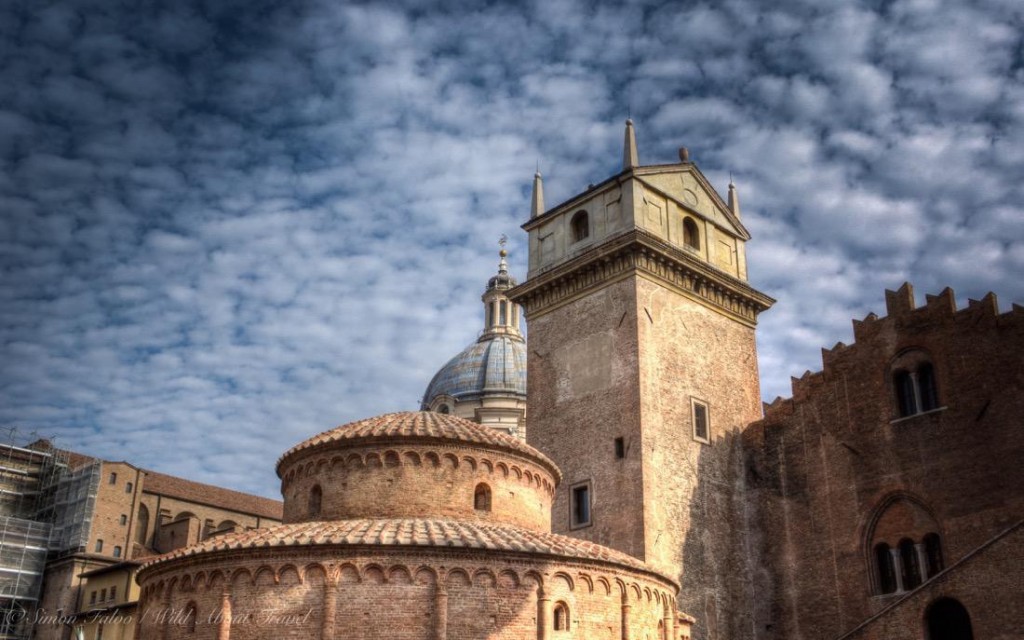
Easily recognizable by its circular shape, the Rotonda di San Lorenzo dates back to the 11th century. It’s the oldest church in the city and, according to the tradition, it was Matilda of Canossa who commissioned it, wanting it in the fashion of the Church of the Holy Sepulcher in Jerusalem. The Rotonda di San Lorenzo is one of Mantua’s main landmarks, so don’t miss it!
Basilica di Sant’Andrea
The famous architect Leon Battista Alberti designed the Basilica of Sant’Andrea in the 15th century. Together with Alberti’s Tempio Malatestiano in Rimini, it’s one of the major Renaissance architectural masterpieces in northern Italy.
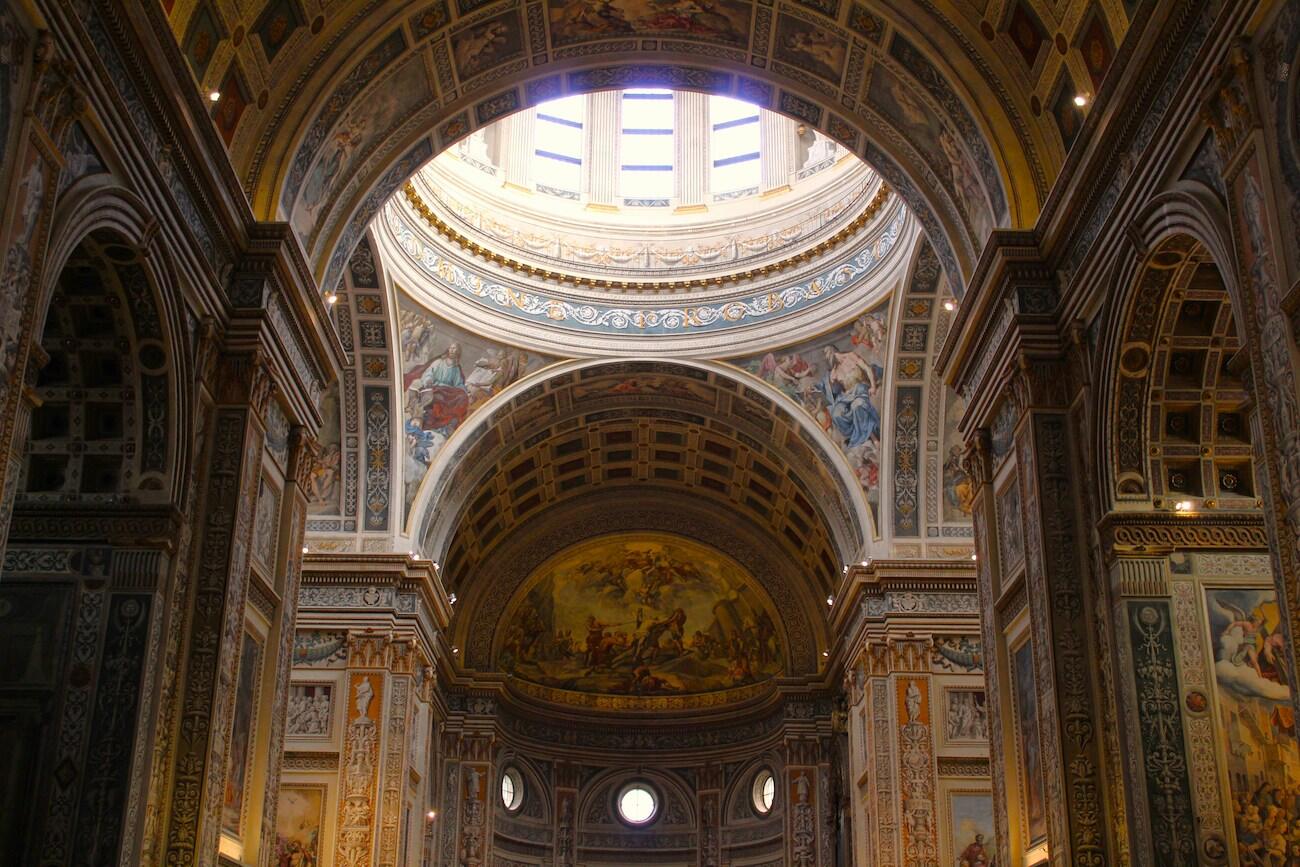
The interior is imposing and magnificent. It houses the chapel where Andrea Mantegna is buried, decorated by Correggio, as well as the tombs of several prominent members of the Gonzaga family.
Bibiena Scientific Theater
If you’re looking for one of the best things do to in Mantua, look no further. The Bibiena Theater is an architectural gem, and it took my breath away. Designed by Antonio Galli da Bibiena, it was inaugurated in late 1769. The Scientific Theatre boasts a unique floorplan shaped like a bell and is an exquisite example of the late Baroque-early Rococo style.

The unusual name “Scientific Theatre” stems from its original purpose, to serve both as a venue to host scientific discussions and also artistic performances and concerts.
A little curiosity: on 16 January 1770 the Bibiena Theater hosted a piano concert by the young Mozart. It seems that the building impressed Mozart’s father so much that he wrote to his wife from Mantua: “Today I saw the most beautiful theater in the world“.
Mantua Palazzo del Te
If Palazzo Ducale strikes for its variety, Palazzo del Te in Mantua is a wonderful example of the late Renaissance style – the movement called Mannerism – and the building that best represents the genius of Giulio Romano.

A pupil of Raphael, Giulio Romano transformed Gonzaga’s summer residence into one of the most beautiful villas where the architecture blends with the surrounding landscape. The frescoes decorating the palace interior show, in turn, sensuality, illusionism, power, and a unique style, marking the bridge between the late Renaissance and Baroque.
Along the road that leads to Palazzo Te, you can see the charming Loggia delle Pescherie, built by Giulio Romano in 1536. What was once a fish market is now a very suggestive and picturesque spot.
There’s no better way to discover the magic of Palazzo del Te than taking a guided tour. You’ll get to know all the secrets of one of Italy’s most beautiful palaces.
BOOK YOUR GUIDED VISIT OF MANTUA PALAZZO DEL TEThe charming alleys of Mantua historical center
The beauty of Mantua, however, is not only in its magnificent buildings but also in the charming alleys. Lined with arcades and pretty houses they invite for a leisurely stroll.
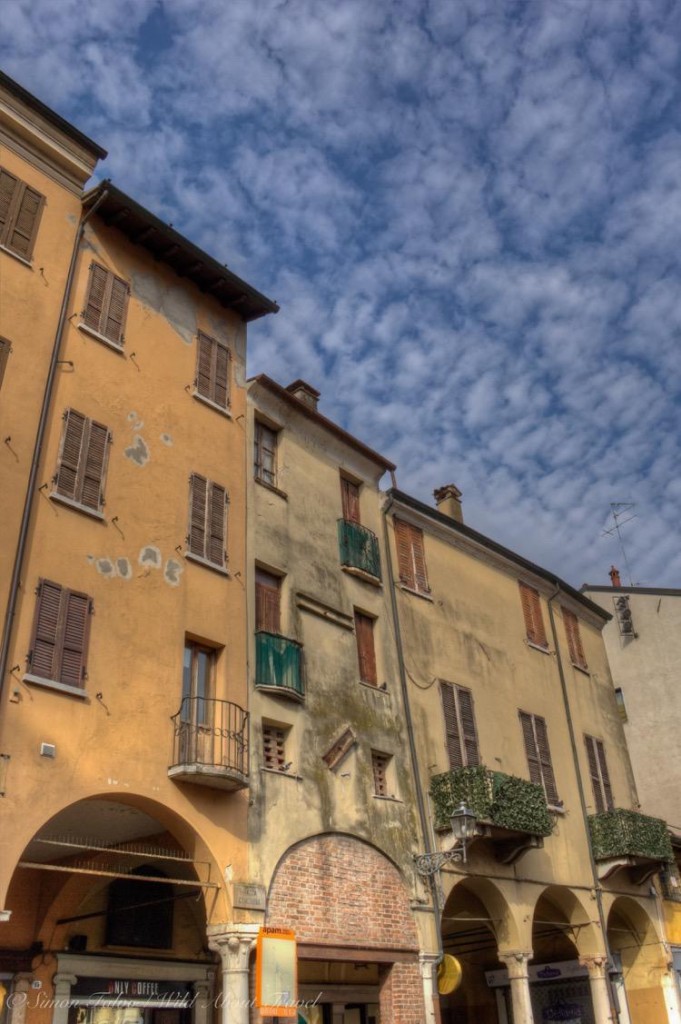
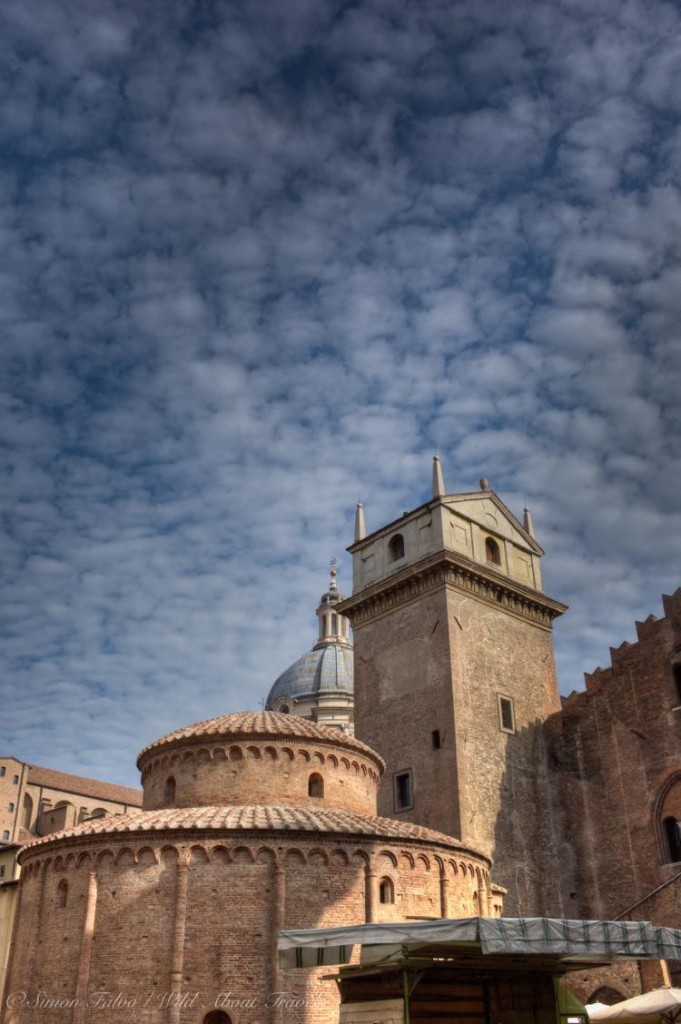
On weekdays Mantua looks a little sleepy and you’ll mostly mingle with locals in the streets of the old town. It gets busier during the weekend, especially when the city hosts special events.
Mantua’s historic center is small, and you can easily explore it by yourself. However, if you want to discover the fascinating history of this unique city, you could tour Mantua with a guide and get the most out of your time.
BOOK YOUR GUIDED VISIT OF MANTUA’S HISTORICAL CENTERMantua delicious food
No trip to Italy would be complete without tasting local food. One of the many things to do in Mantua is to discover a few delicious specialties.
Pumpkin ravioli (ravioli di zucca) are Mantua’s most famous dish. They are typical for their sweet taste and come seasoned with melted butter, sage, and parmesan cheese. As often happens in Italian traditional cuisine, Risotto alla Pilota is a rustic dish based on a few ingredients. In the past, it was favored by manual workers, who needed a nourishing dish able to satisfy their appetite. Hence a risotto with sausage, butter, and parmigiano. To be honest, I’m not particularly fond of Risotto alla Pilota, but you should taste it and decide by yourself.

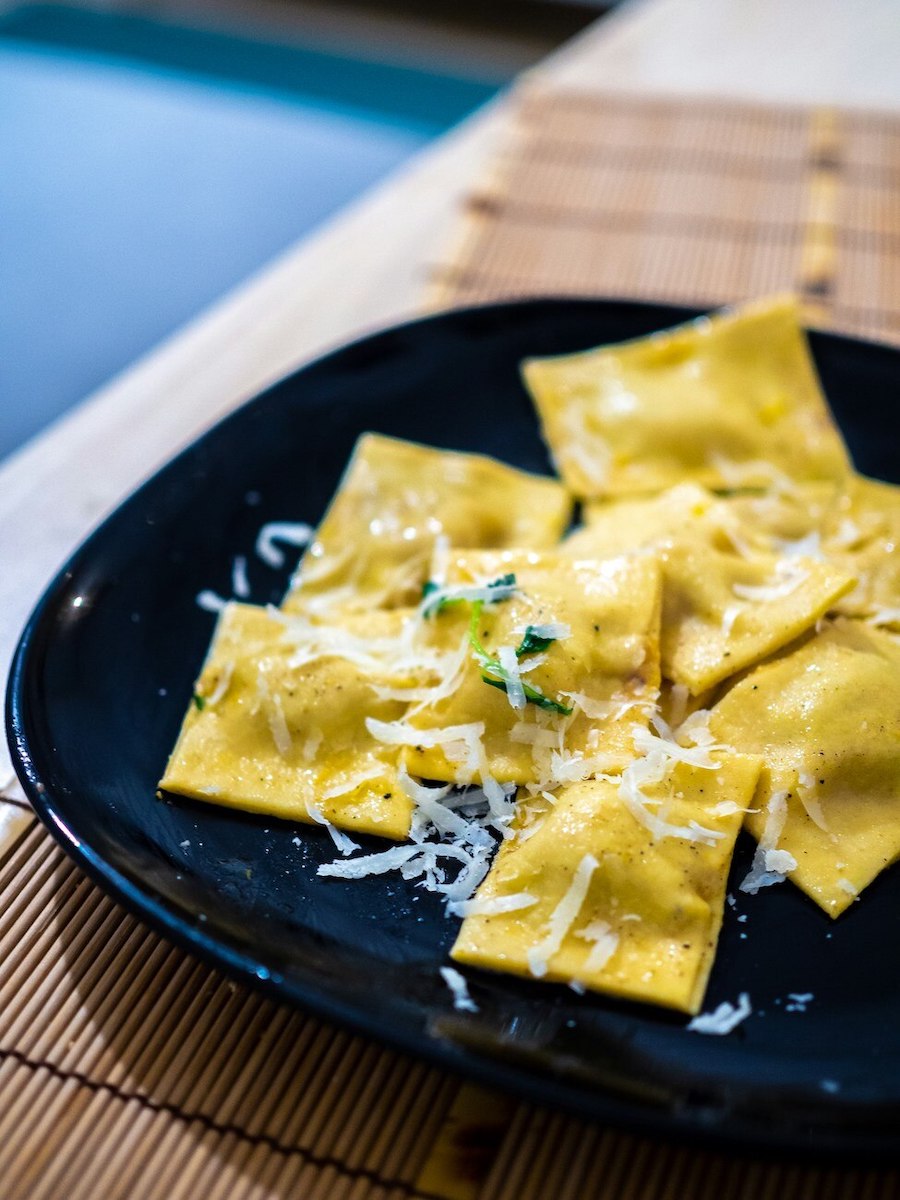
A sweet you have absolutely to try is Torta Sbrisolona, a dry cake made of almonds. It’s also a perfect idea if you want to bring back a special gift.
Mantua lakes
Created in the 12th Century as a defense system and to reinforce the town’s natural protection, Mantua artificial lakes have become a leisurely spot. They are perfect for a walk, a bicycle ride, a boat tour, or a picnic. The lakes also attract fishermen who stand patiently along the shore, waiting for a fish to bite the bait.
During the summertime, hundreds of pink lotus flowers. cover a wide area of the lakes.
Introduced almost one century ago, the lotus flowers have perfectly adapted. Their blossoming, in June and July, has become one of Mantua’s attractions. I took a trip late in the afternoon, and as the boat slowly sailed between the canals made by the lotus flowers, listening to the whispering breeze and the singing birds, for a while I felt as if I was in another world. And the sunset was breathtaking.
Art, nature, food, a lively and welcoming atmosphere far from the crowds of tourists and closer to the locals. That’s what makes Mantua one of the best cities to visit in Italy.

Pin for later!
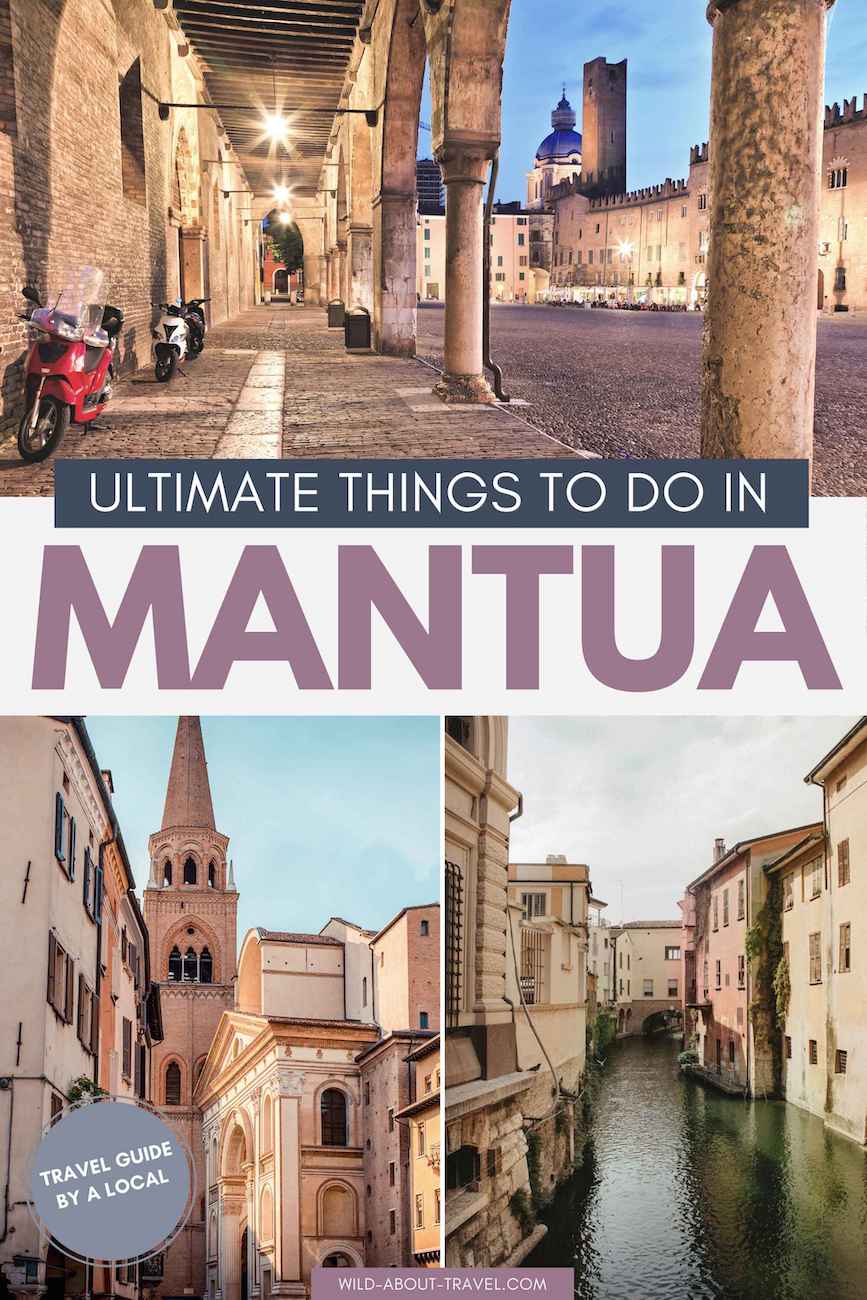

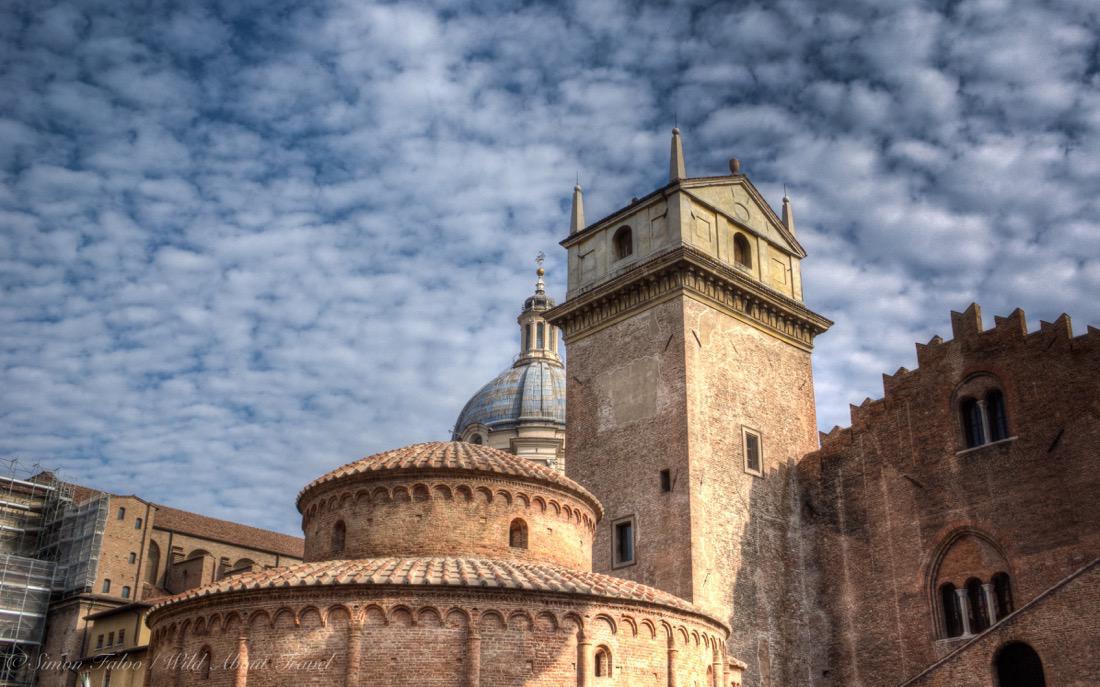
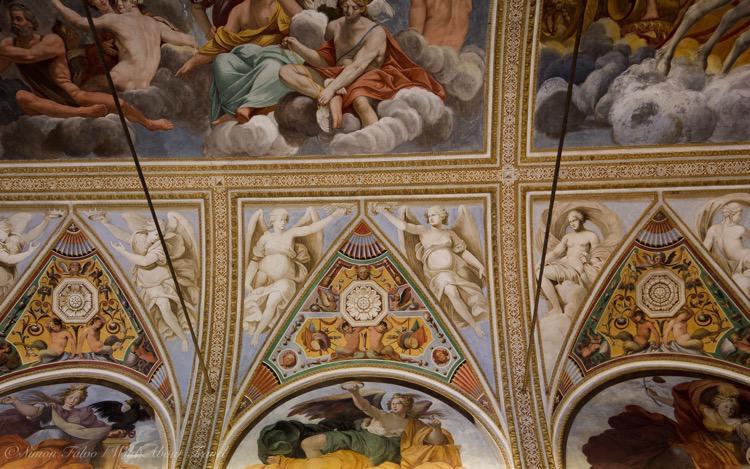
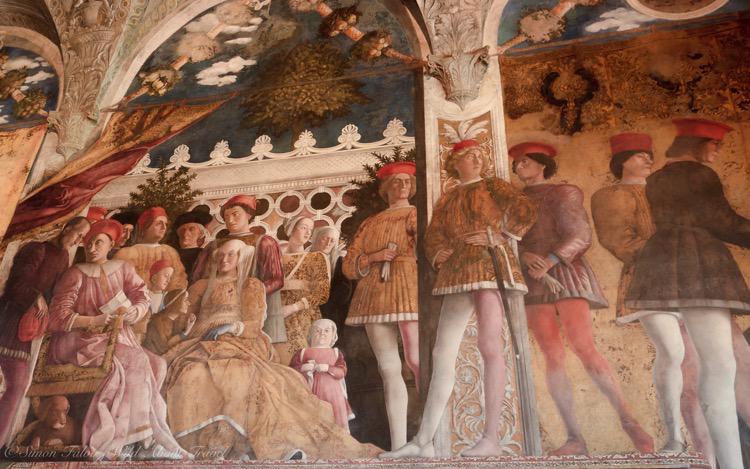

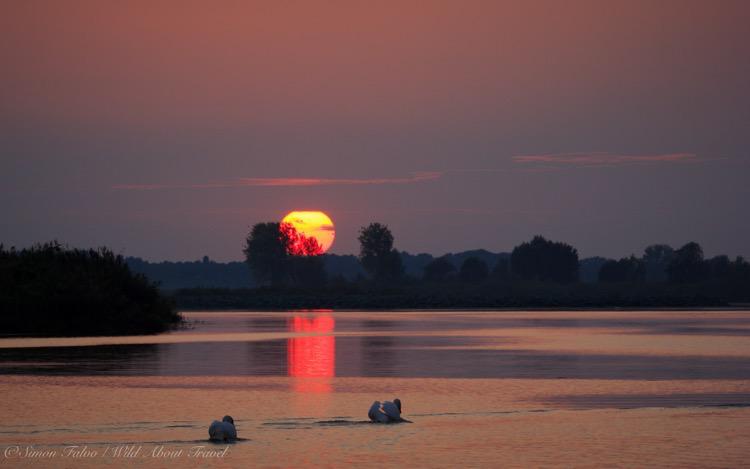


For an overlooked city, it would sure be a huge attraction anywhere else. Italy has so much to offer!
How pretty it must be to see the pink lotus flowers in the lake when visiting Mantua! The fact that it’s not as touristy as Rome, Florence, Venice, etc. probably adds to its charm :-).